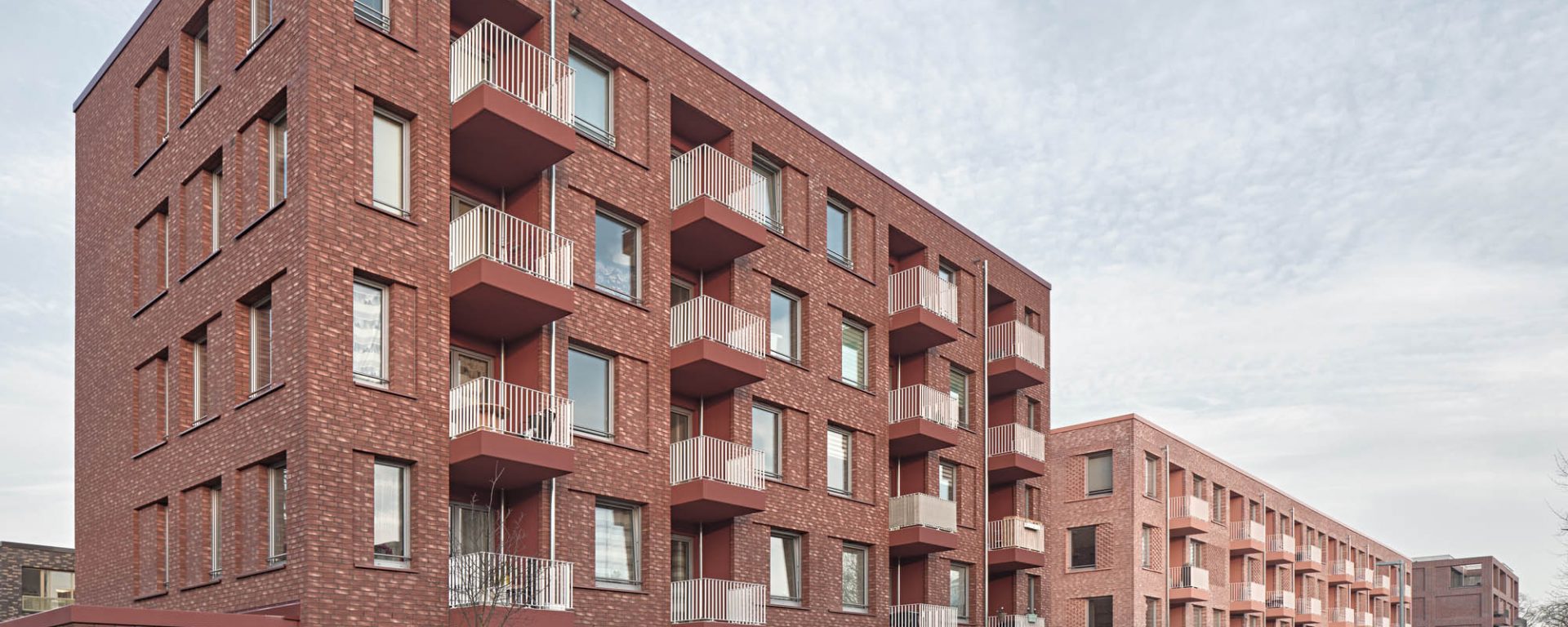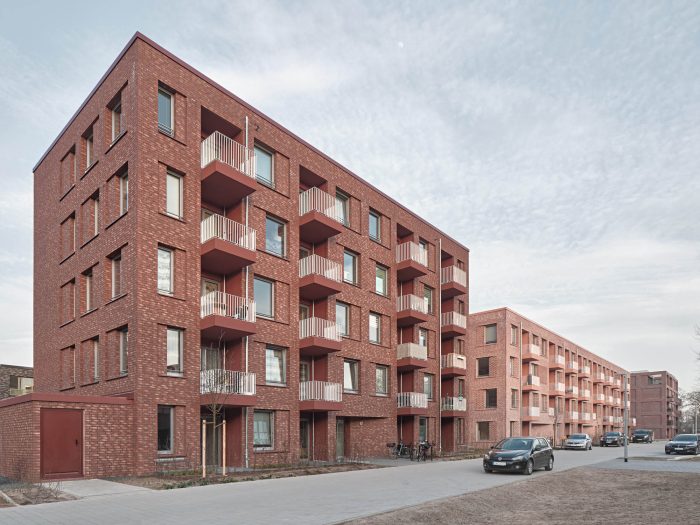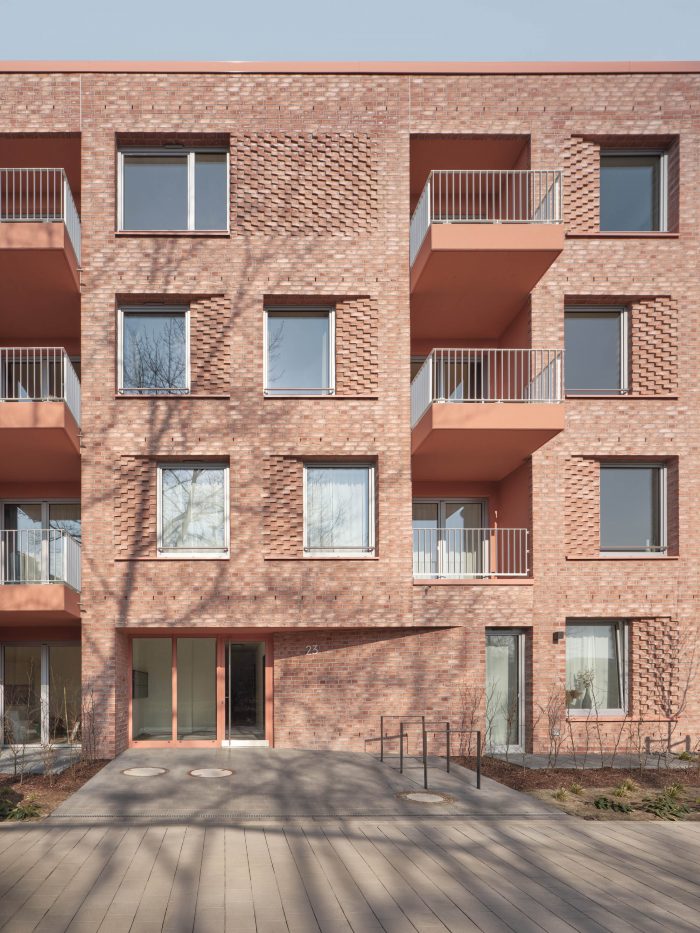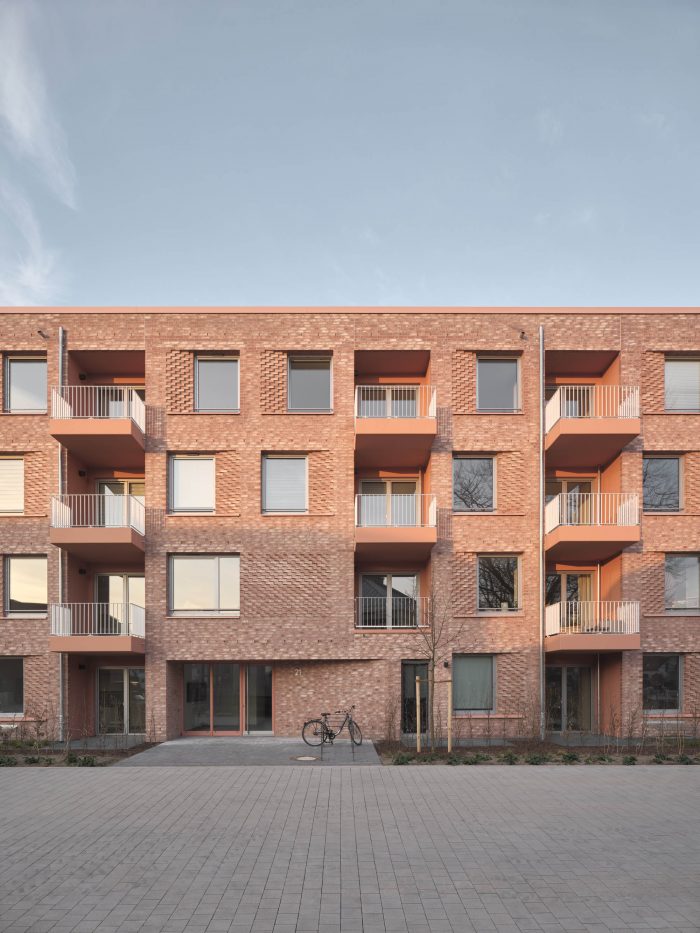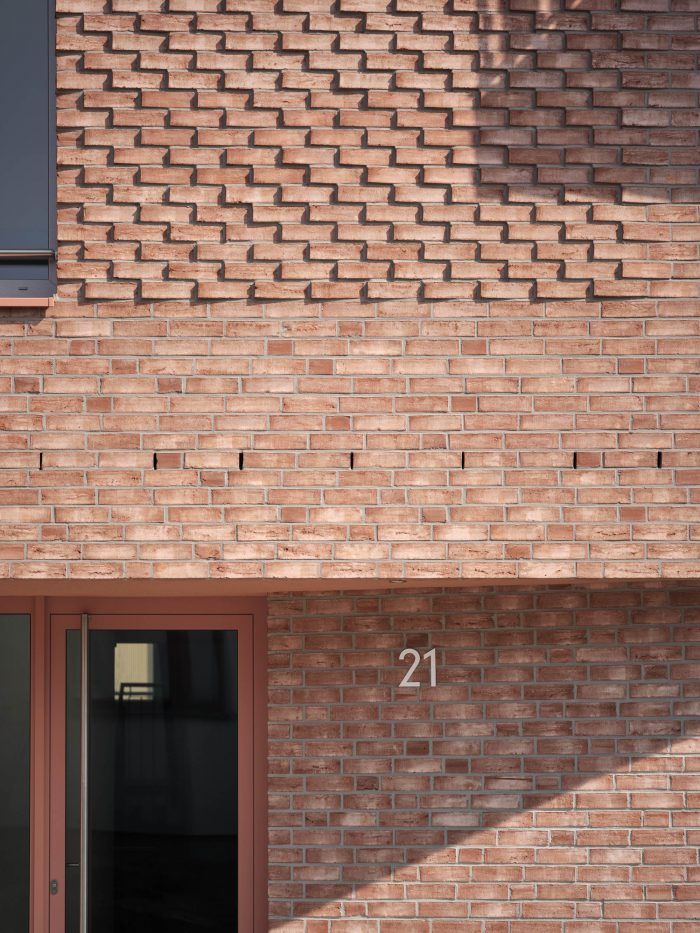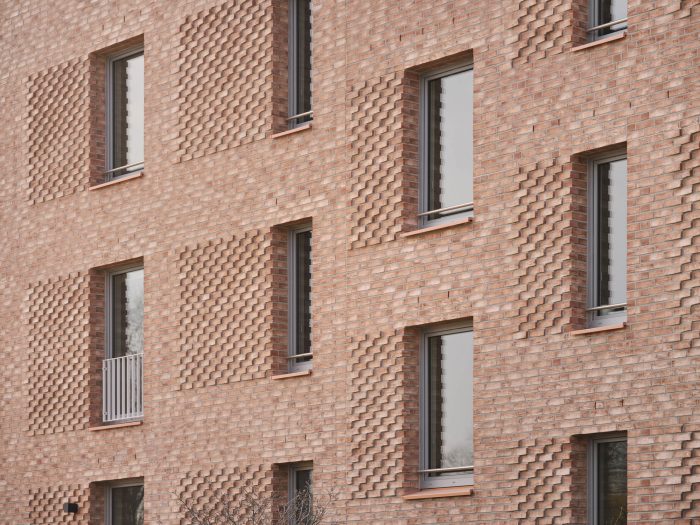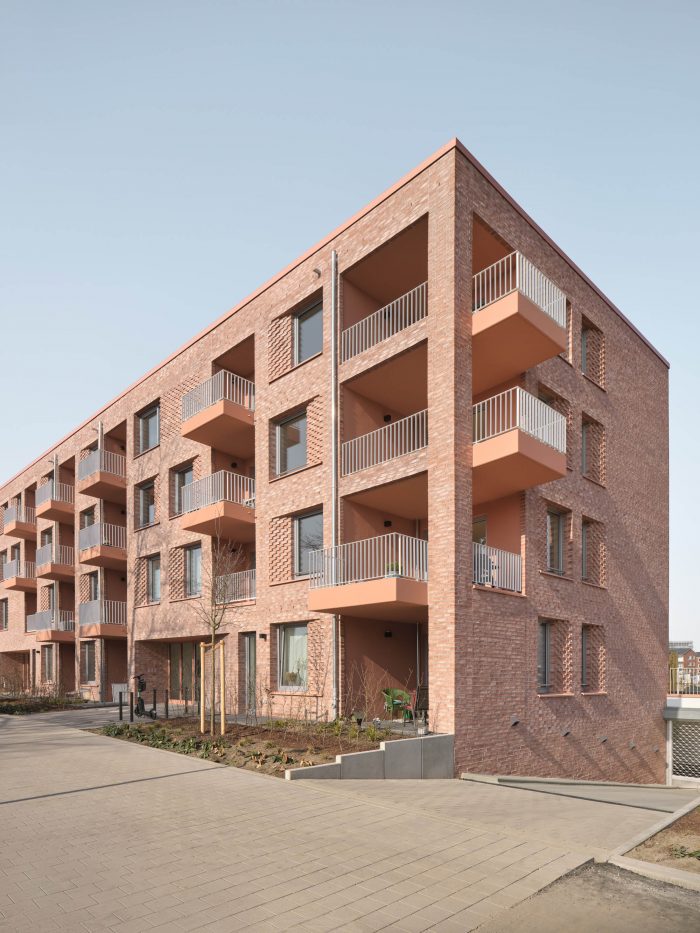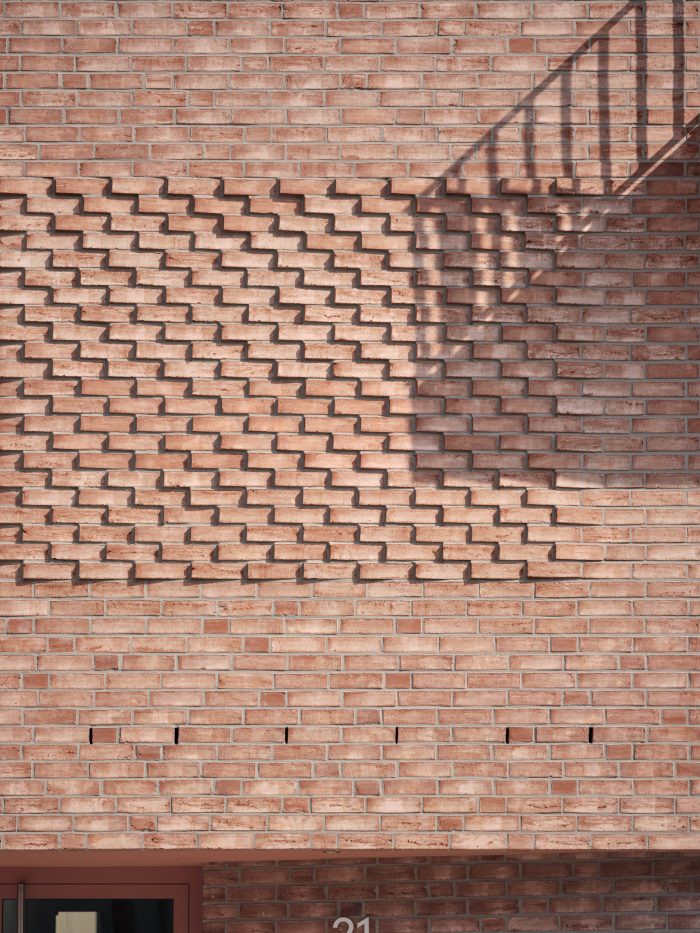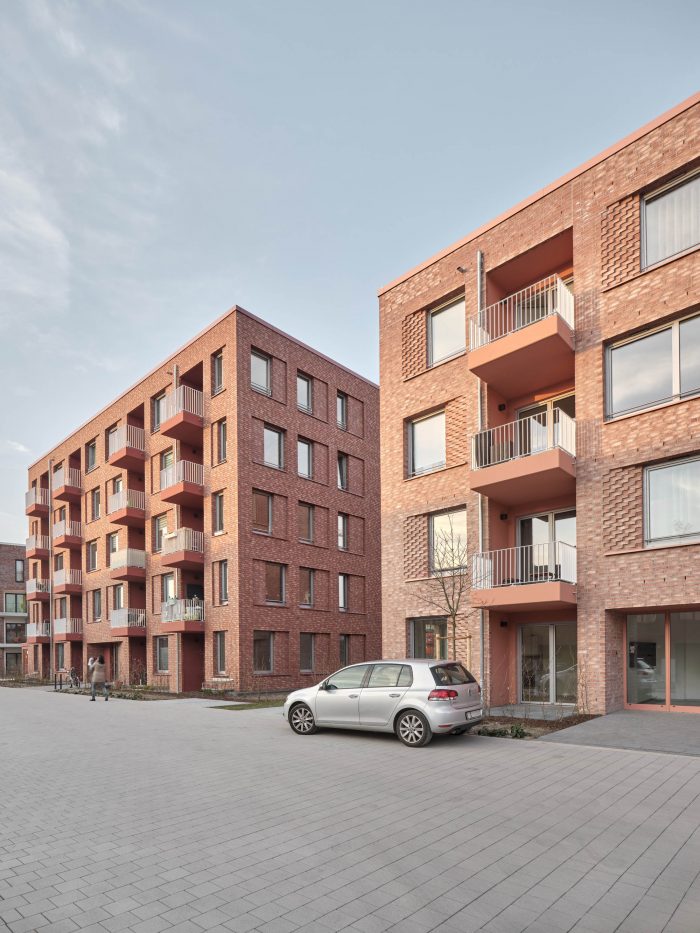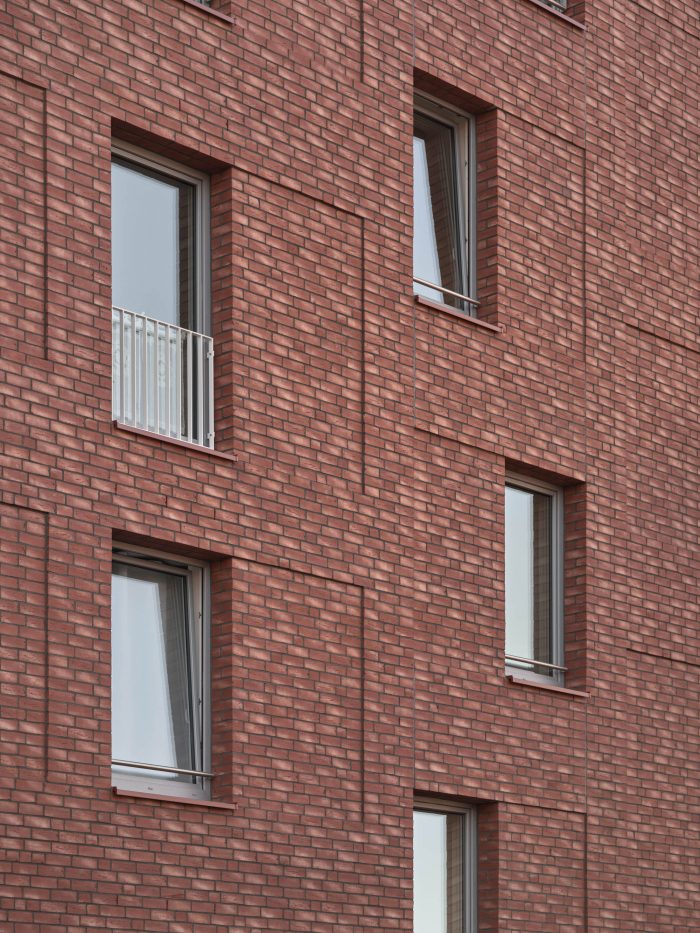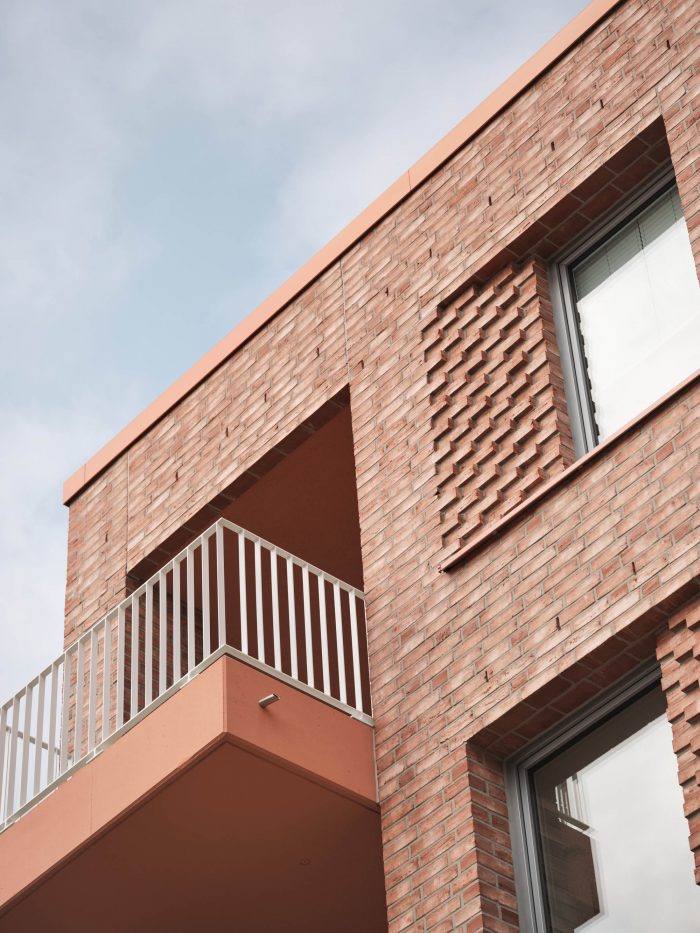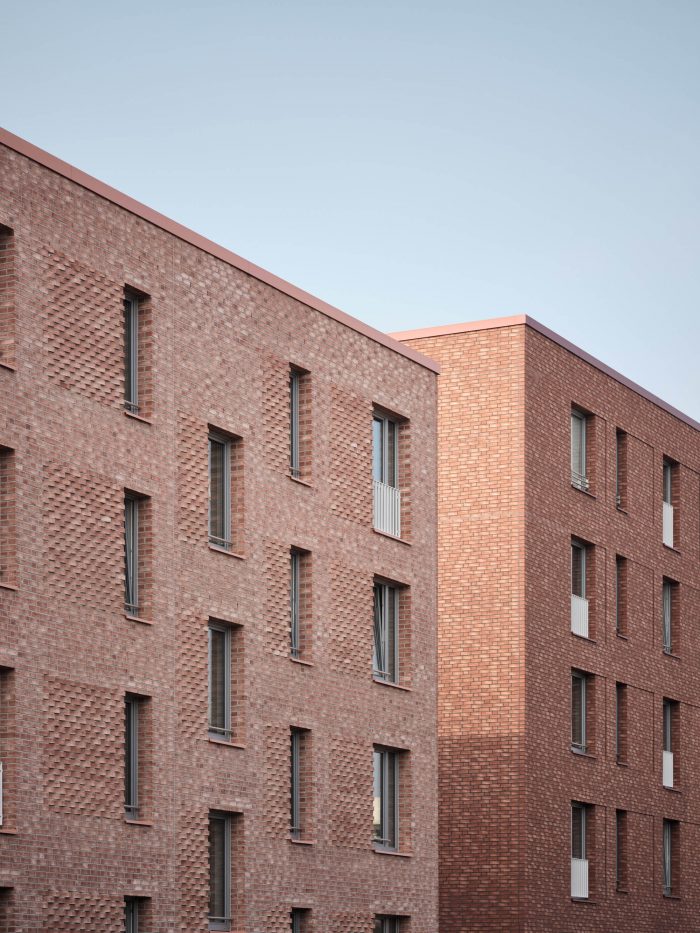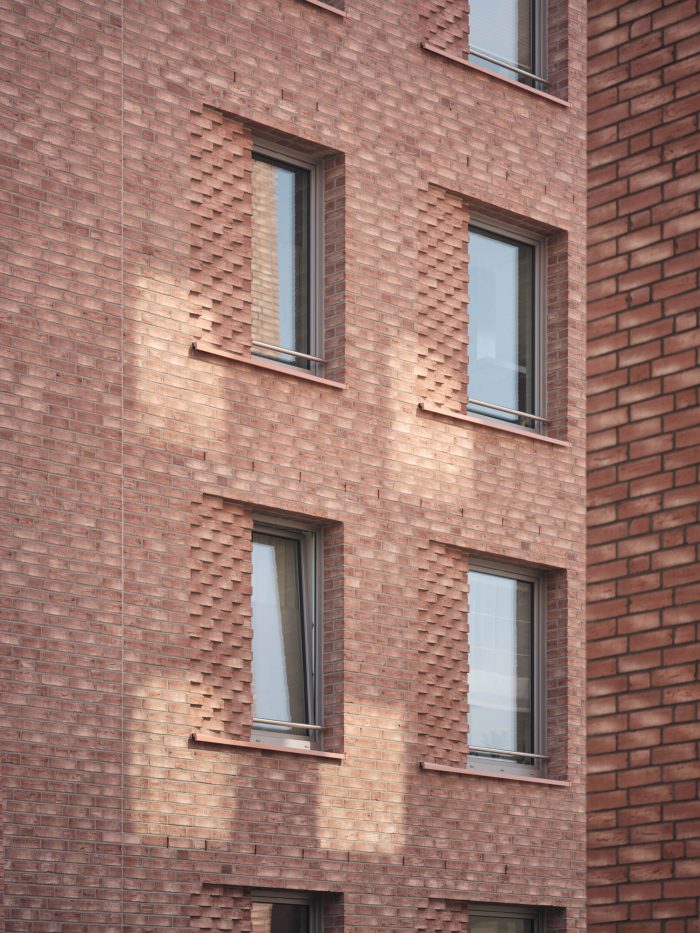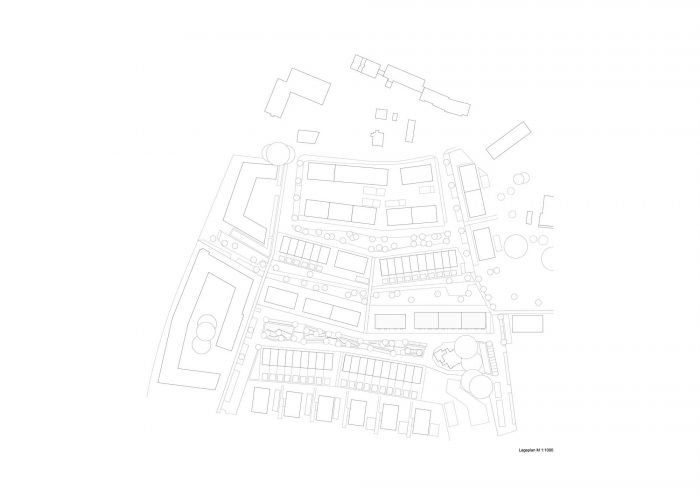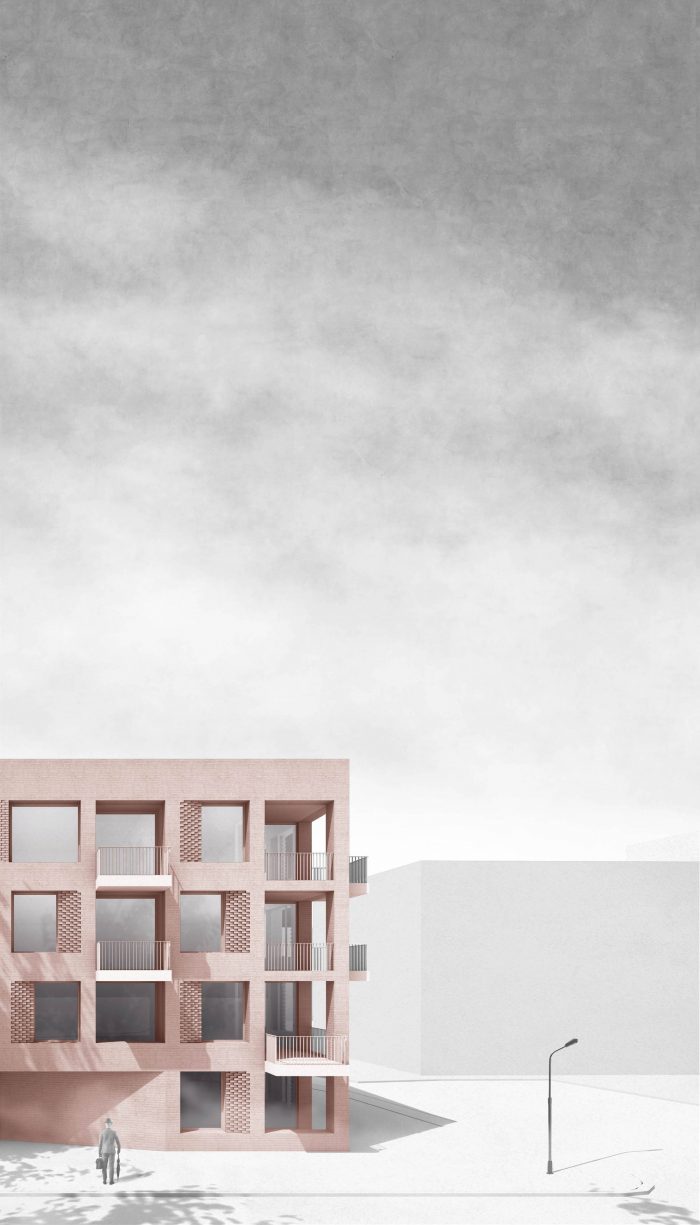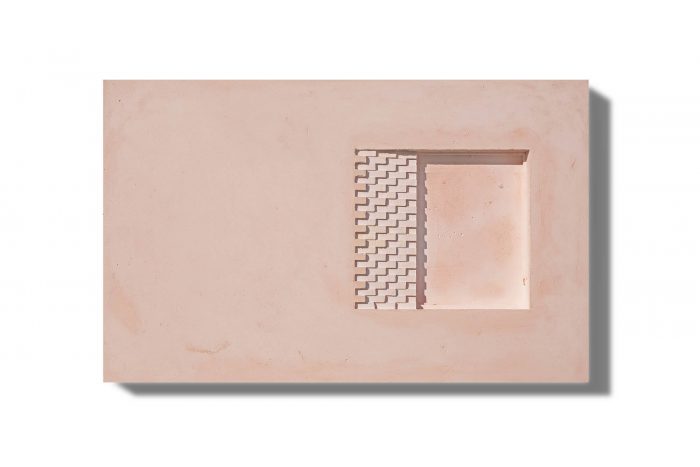该公寓楼有56个单元,分为两栋房子,是2018年建筑竞赛的结果。规划区面积共约6公顷,位于汉诺威的Groß-Buchholz区。在此之前,该地区被用作医院。在结构调整过程中,其作为医院所在地的用途在2014年9月被放弃了
The apartment building with 56 units, divided into two houses, is the result of an architecture competition in 2018. The area of the planning area covers a total of approx. 6 hectares and is located in the Hanover district of Groß-Buchholz. Previously, the area was used as a hospital. In the course of structural changes, its use as a hospital location was given up in September 2014
与其他地区相比,住宅区南部入口处的城市发展状况显示出某种形式的城市性,因为随着现有的医院小教堂被改建为会议场所和计划中的日托中心,公共设施被安置在这里。通过使用砖作为外墙材料,以及通过与窗户相结合的外墙元素,已经创造了这种感觉。这些元素相对于二维主要结构的轻微后退或倾斜,创造了砖块外墙的雕塑般的整体印象。
The urban development situation at the southern entrance to the residential area shows a certain form of urbanity compared to the other areas, as public facilities have been placed here with the conversion of the existing hospital chapel as a meeting place and the planned daycare center. It is already created through the use of brick as the facade material, as well as through the facade elements combined with the windows. The slight setback or inclination of the elements in relation to the two-dimensional primary structure creates a sculptural overall impression of the brick facades.
由于房屋入口处的墙体部分的单侧倾斜,建筑入口的设计形式非常大方,地址形成的主题得到了适当的表达。同时,建筑的整个底层区域被赋予了创造性的表达,使其与其他楼层相区别。
With the generously designed form of the building entrances due to the one-sided inclination of the wall sections at the house entrances, the topic of address formation is given the appropriate expression. At the same time, the entire ground floor zone of the building is given a creative expression that distinguishes it from the other floors.
外墙。本项目的外墙参考了汉诺威城市发展中强烈的砖块表现主义。规则的外墙网格构成了住宅建筑的基本结构。根据房间的朝向和大小,窗洞被不同宽度的外墙所填充,错开或后退。通过这种方式,窗户的尺寸可以适应各自房屋的能量标准,或后面空间的要求,同时,每个建筑都有自己的特点。斜面设计改善了建筑南面的日光入射。
Facades. The facade of the project refers to the strong brick expressionism in the urban development of Hanover. A regular facade grid forms the basic structure for residential buildings. Depending on the orientation and size of the room, the window openings are filled with reveals of different widths, staggered or set back. In this way, the window sizes can be adapted to the energetic standard of the respective house, or the requirements of the space behind, and at the same time, each building receives its own character. The bevelling improves the incidence of daylight on the south-facing side of the building.
场地在视觉上扩大了外墙的开口,砖块的交错暴露了外墙最小的部分:石头。外墙的生命力特别来自于光和影的游戏、三维和雕塑性。
The fields optically enlarge the openings in the facade and the staggering of the brick exposes the smallest part of the facade: the stone. The facade lives in particular from the play with light and shadow, the 3-dimensionality and its sculpturality.
在大量的石膏研究中,暴露区域的装饰性砖石与窗户的开口相匹配。两座房子的砖的基本颜色都是一样的。石头烧制过程的持续时间不同,釉面的渐变,以及不同的接头颜色,导致建筑物上的颜色有轻微变化。在相同的设计原则下,由于对相同或相似的设计元素和颜色的不同使用,这两个建筑部分与链式房屋和点式房屋一起定义了附近的城市情况的特征。
In numerous plaster studies, the decorative masonry of the reveal areas was matched to the window openings. The basic color of the bricks is the same for both houses. The different duration of the firing process of the stones, the gradations in the glaze, and the different joint colors result in a slight color change on the buildings. In the same design canon, but with different use of the same or similar design elements and colors, the two-building sections with the chain house and the point house together define the character of the urban situation in the immediate vicinity.
Architects: Busch & Takasaki Architekten
Area: 5000 m²
Year: 2020
Photographs: Caspar Sessler
Lead Architects: Julian Busch and Simon Takasaki
Builder:Wohnkompanie Nord
City:Hanover
Country:Germany

